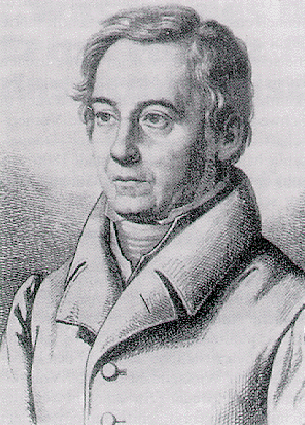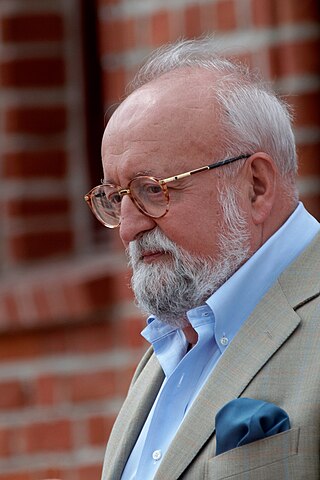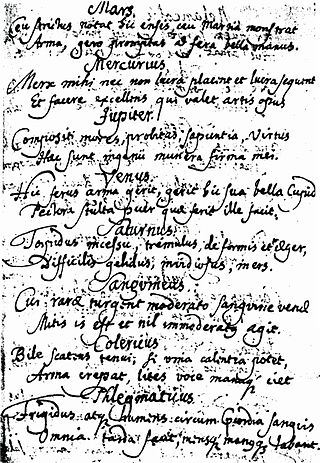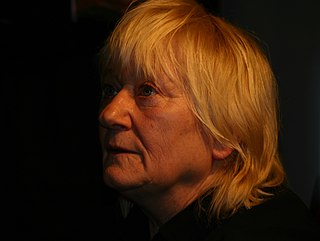
Baron Franz Xaver von Zach was a Hungarian astronomer born at Pest, Hungary.

Ernst Moritz Arndt was a German nationalist historian, writer and poet. Early in his life, he fought for the abolition of serfdom, later against Napoleonic dominance over Germany. Arndt had to flee to Sweden for some time due to his anti-French positions. He is one of the main founders of German nationalism during the Napoleonic wars and the 19th century movement for German unification. After the Carlsbad Decrees, the forces of the restoration counted him as a demagogue.

Cryolite (Na3AlF6, sodium hexafluoroaluminate) is an uncommon mineral identified with the once-large deposit at Ivittuut on the west coast of Greenland, mined commercially until 1987.
The Cagots were a persecuted minority who lived in the west of France and northern Spain: the Navarrese Pyrenees, Basque provinces, Béarn, Aragón, Gascony and Brittany. Evidence of the group exists as far back as 1000 AD.

Gothelo, called the Great, was the duke of Lower Lorraine from 1023 and of Upper Lorraine from 1033. He was also the margrave of Antwerp from 1005 and count of Verdun. Gothelo was the youngest son of Godfrey I, Count of Verdun, and Matilda, daughter of Herman, Duke of Saxony. On his father's death, he received the march of Antwerp and became a vassal of his brother, Godfrey II, who became duke of Lower Lorraine in 1012. He succeeded his brother in 1023 with the support of the Emperor Henry II, but was opposed until Conrad II forced the rebels to submit in 1025. When the House of Bar, which ruled in Upper Lorraine, became extinct in 1033, with the death of his cousin Frederick III, Conrad made him duke of both duchies, so that he could assist in the defence of the territory against Odo II, count of Blois, Meaux, Chartres and Troyes.

An die ferne Geliebte, Op. 98, is a composition by Ludwig van Beethoven written in April 1816, setting poetry by Alois Jeitteles.

Marianne Rosenberg is a German Schlager music singer and songwriter.

Regat Germans or Old Kingdom Germans are an ethnic German group of the eastern and southern parts of Romania. The Regat is a Romanian-language term ascribed for the initial territorial extent of the Kingdom of Romania before World War I, roughly the regions of the current state of Romania to the south and east of Transylvania.
Martin Schrot was a German goldsmith and engraver from Augsburg. His name has also been spelled "Schrott" and "Schroth". He is not to be confused with the Protestant poet from Augsburg with the same name.

During World War II, Nazi birthing centres for foreign workers, known in German as Ausländerkinder-Pflegestätte, Ostarbeiterkinderpflegestätten, or Säuglingsheim were German institutions used as stations for abandoned infants, Nazi Party facilities established in the heartland of Nazi Germany for the so-called 'troublesome' babies according to Himmler's decree, the offspring born to foreign women and girls servicing the German war economy, including Polish and Eastern European female forced labour. The babies and children, most of them resulting from rape at the place of enslavement, were abducted en masse between 1943 and 1945. At some locations, up to 90 percent of infants died a torturous death due to calculated neglect.

The Symphony No. 8 "Lieder der Vergänglichkeit" by Krzysztof Penderecki is a choral symphony in twelve relatively short movements set to 19th and early 20th-century German poems. The work was completed and premiered in 2005. The symphony has an approximate duration of 35 minutes. Penderecki revised the symphony in 2007 by adding a few more poem settings and the piece has expanded to around 50 minutes. Although given the designation Symphony No. 8, it was not actually the final symphony Penderecki completed before his death in March 2020; the Sixth Symphony, begun in 2008, was not completed until 2017.

Echinostomata is a suborder of the parasitic flatworm order Plagiorchiida. The suborder contains numerous species that are parasitic in humans.

Marcus Fronius was a Lutheran theologian, pedagogue, and author whose published works covered topics such as theology, metaphysics, and humoral physiology.
Ivan Strez Balšić or Gjon Balsha ; fl. 1444–1469) and his brothers George Strez and Gojko Balšić were the lords of Misia, a coastal area from the White Drin towards the Adriatic. The brothers were members of the Balšić family, which earlier held Zeta, but had now placed itself among the nobility in Albania. They participated in founding of the League of Lezhë, an alliance led by their maternal uncle Skanderbeg. Ivan and Gojko supported Skanderbeg until he died in 1468 and then continued to fight against Ottomans together with Venetian forces. After Skanderbeg's death Venice installed Ivan Strez Balšić as Skanderbeg's successor.

Helmut Müller-Enbergs is a German political scientist who has written extensively on the Stasi and related aspects of the German Democratic Republic's history.

Carmen-Maja Antoni is a German actress.

"Was mein Gott will, das g'scheh allzeit" is a Lutheran hymn in German. The text from c. 1550 is attributed to Albert, Duke of Prussia. The melody, Zahn No. 7568, goes back to a tune by Claudin de Sermisy, written in 1529 for a secular French song. The hymn has belonged to core Lutheran hymnody without interruption and is part of the Protestant hymnal Evangelisches Gesangbuch as EG 364.

The Sarıaydın inscription is an Aramaic inscription found in situ in 1892 near the village of Sarıaydın in Southern Anatolia. It is also known as the Sarıaydın Hunting inscription or the Cilician Hunting inscription. It was discovered on the Austrian expedition to Cilicia of Rudolf Heberdey and Adolf Wilhelm.

The Idalion Temple inscriptions are six Phoenician inscriptions found by Robert Hamilton Lang in his excavations at the Temple of Idalium in 1869, whose work there had been inspired by the discovery of the Idalion Tablet in 1850. The most famous of these inscriptions is known as the Idalion bilingual. The Phoenician inscriptions are known as KAI 38-40 and CIS I 89-94.

Uta Bresan is a German schlager / folk singer and television presenter. Commentators pay tribute to her enduring versatility in both capacities.

















